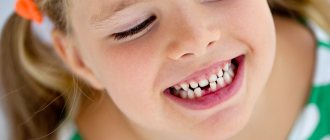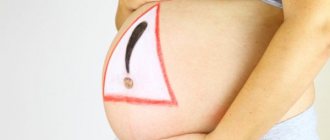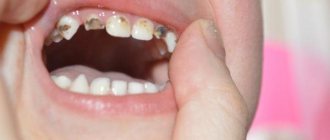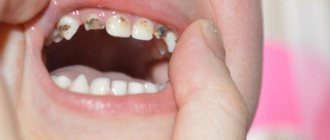Removing temporary teeth in a child has its own characteristics. They are related to the nature of their structure and available indications. This is an extreme measure, as their premature loss has a negative impact on the health of your smile. Baby teeth fall out on their own, and permanent teeth appear in their place - this is a natural process. However, sometimes situations arise when you need to extract them in advance, that is, delete them. For advice on the advisability of such a procedure, you can contact our pediatric dentistry in Maryina Roshcha.
What are the indications for the removal of baby teeth?
Common carious lesions are the most common indications for the procedure. However, this is not the only reason. One of the common indications for the removal of primary teeth is their abnormal growth, which increases the risk of malocclusion and problems during the eruption of permanent teeth.
Other indications for the removal of baby teeth are:
- the occurrence of dental diseases that can cause tissue necrosis;
- diagnosis of periodontal fistulas and abscesses, as well as other pathological changes in the gums;
- too late resorption of milk roots, which prevents the eruption of permanent teeth;
- mechanical damage that may occur as a result of a child falling.
An indication may also be the fact that a baby tooth remains in the dental arch for too long, despite the fact that the permanent one has already begun to erupt. A tooth should also be removed when it begins to move and thus makes it difficult for the child to eat and speak. In such a situation, you should not pull it out using old home methods, because this can damage the gums.
Care after removal
In order for the wound to heal normally, you need to follow the recommendations for caring for your teeth after extraction. An infection can easily penetrate through an unhealed wound, which means that without care there is a risk of developing inflammation.
Caring for your child’s oral cavity is very simple:
- Immediately after removal, it is important to prevent the blood clot from being washed out of the socket. Therefore, the child should not eat or drink anything.
- The wound should be protected as much as possible from the risk of infection. You can't touch it with your hands. You need to make sure that the baby does not touch the hole. Penetration of infection can lead to the development of inflammation, suppuration and other complications.
- The first three days you need to do mouth baths. You can use medications that your surgeon recommends. Suitable decoctions of herbs with antiseptic and anti-inflammatory properties - sage, chamomile.
- The child’s diet should be monitored for the first five days. You should not eat solid food, cold and hot drinks, or confectionery.
If you follow these simple rules, a child almost never experiences complications after the removal of a baby tooth. In case of infection, you should immediately show the child to a doctor. You should come for examination if the following symptoms appear:
- Continuous bleeding. After removal of a dental unit, the wound may bleed for several hours. If the bleeding does not stop, you should consult a doctor.
- Bad breath. It may be a sign of developing inflammation or suppuration. The inflammatory process quickly spreads to other tissues, which can cause serious complications.
- Fever. Speaks of infection or inflammatory process. Immediately after surgery, your temperature may rise slightly. This is often due to the stress that the child experiences in the dental chair. If the temperature persists for a long time or rises during the healing process, you cannot delay a visit to the dental clinic.
How is milk teeth removed for orthodontic reasons?
If a young patient has crowded teeth, the offending primary teeth should be removed to avoid bite problems during primary replacement.
This dental procedure takes place in four stages:
- Removal of primary posterior incisors at the time of eruption of permanent incisors.
- Extraction of primary canines (this is necessary for the proper growth of permanent incisors).
- Extraction of primary first molars, provided that the first premolars are 1/2 to 2/3 the length of the root.
- Stage four: removal of permanent first premolars before the eruption of permanent canines to make room for them.
Answers to popular questions
How is primary chewing teeth removed in children?
Just like others - quickly and painlessly. Anesthesia relieves discomfort, and the doctor carefully removes the crown from the socket.
Indications for removal of baby teeth in children?
Removal of children's milk teeth is necessary in case of severe caries or pulpitis, inflammation at the root, or splitting or cracking. People also come to me with very loose teeth, as prescribed by the orthodontist, or if an extra tooth is growing.
How much does it cost to remove a baby tooth?
It all depends on the position and mobility of the tooth. The need for anesthesia, the complexity of the procedure, and the number of units removed affect the cost of removing a primary tooth(s). Come for a consultation – we’ll tell you everything!
Where to remove a child's tooth?
It is worth knowing that only pediatric surgeons perform removal of baby teeth in dentistry. Experience and increased caution are required when working with baby teeth, so only specially trained doctors undertake this. At the Azabuka clinic we remove children's teeth of any complexity.
How to properly remove a baby tooth?
Removing children's teeth requires care and attention. I first numb the pain, then apply and fix the forceps on the coronal part - I dislocate and extract the tooth. I give it to the child for the Tooth Fairy, and I treat the hole. It may sound scary, but in reality it’s not even painful.
How to prepare a child for tooth extraction?
At Aza&Buka we recommend an adaptation technique. Our doctors have psychological training and easily prepare children for treatment and even removal of baby teeth. The reception takes place in a game format and is aimed at combating children's fears.
Did not find an answer to your question?
Consequences of premature removal of a baby tooth
These include:
- Bite disorders. Removing a tooth frees up space into which neighboring teeth gradually move. In the future, when a permanent tooth grows in instead of a temporary one, there will be no room left for its normal growth.
- Incorrect formation of the maxillofacial apparatus. Missing one or more teeth can result in insufficient stress being placed on the bone tissue, which in turn can slow down its growth and development.
- Disorders of the digestive system. The absence of one of the masticatory organs leads to poor chewing of food. This can cause a number of chronic diseases.
- Speech disorders. The incisors are part of the vocal apparatus, and the absence of one or more of them will certainly affect the development of speech.
- Psychological problems. The absence of a tooth in the smile area can cause some difficulties in communicating with peers and negatively affect the child’s self-esteem.
Therefore, the popular belief that there is nothing wrong with premature loss of baby teeth is completely wrong. A good dentist always carefully evaluates the feasibility of removing them and, if possible, tries to preserve them. The need for such a procedure must be confirmed by x-ray.
Possible sensations
Of course, after tooth extraction, discomfort will remain. But there are some acceptable limits for being unwell. Of course, you shouldn’t be like Pliny the Elder and look for a toad on a full moon, spit in its mouth and say healing words; it’s better to find out from the child what exactly is bothering him and how. The following consequences are possible:
- Pain after the anesthesia wears off. In this case, it is necessary to give an anesthetic in the permitted dose.
- Bleeding from the wound during the first five to six hours after removal.
- is possible after tooth extraction in a child - both the gums and the tissue of the cheek or lip can swell. During the first three days, the swelling may increase, and then it will go away on its own.
If a child experiences fever after tooth extraction, as well as chills, then you should immediately consult a dentist.
What should you consider when removing a baby tooth?
The following are taken into account:
- Anatomical features. The walls of primary teeth are relatively thin, and the roots can go deep at a large angle. Therefore, their removal requires the use of special forceps, which help eliminate the possibility of damage to the tooth walls. Pulling out is done in one motion so that the baby experiences minimal discomfort.
- Pain relief. In most cases, anesthesia is not required, especially if the tooth is already loose. Local anesthesia may be required to remove the nerve. The required dose of the drug is calculated individually for each patient.
- Contraindications to the procedure are diseases that cause bleeding disorders (leukemia, hemophilia), hematomas in the mouth, chicken pox, whooping cough, scarlet fever, influenza, sore throat, etc. Gingivitis and candidiasis can also be a reason to temporarily postpone the procedure.
Types of pain relief during tooth extraction in children
The painfulness of the tooth extraction procedure in Moscow is the main reason for the fear of visiting the dentist for both children and their parents, who are worried about the well-being of their child and want to carry out the extraction as quickly and easily as possible. Modern dentistry has methods of pain relief in which the child will not feel any pain at all. When it is necessary to remove baby teeth with already resolved roots, the dentist gives preference to topical anesthesia . This method involves applying a special anesthetic gel to the gums. However, it is rarely used - only if the tooth was healthy and did not hurt, but for some reason it failed to fall out.
The most commonly used method to solve this problem is infiltration anesthesia , which involves introducing an anesthetic into the gums by injection. For the injection, special, very thin needles are used. The injection site is numbed with an anesthetic gel, so the young patient will not even feel the injection.
General anesthesia is rarely used to remove baby teeth. It is indicated if the child has serious mental illness, acute and purulent inflammatory processes, or is allergic to drugs used for local anesthesia. As a rule, all substances used for pain relief during the removal of baby teeth are completely safe and easily tolerated by young children.
After the operation is completed, the doctor should inform the parents about how to take care of the oral cavity after visiting the dentist. This is done to avoid complications, speed up wound healing time and relieve stress.
General recommendations include prohibitions on eating and drinking in the next two hours after surgery, carefully rinsing the mouth with special antiseptic solutions for two to three days, and avoiding injuries from spicy, salty or too hot foods. Parents should explain to their child that it is not recommended to touch the socket with your hands and tongue, and if bleeding or pain occurs at the extraction site, you should immediately inform an adult. In the latter case, you must immediately go to the dentist.
Tooth extraction: complications
Sometimes complications can occur after tooth extraction. What parents should pay attention to:
- if the baby has unbearable and prolonged pain;
- bleeding does not stop, the blood is bright scarlet;
- the child has severe swelling, which makes it difficult to swallow;
- the baby complains of immobility (numbness) of the jaw for more than 2 days;
- temperature above 38ºС.
If you notice that your child feels unwell after tooth extraction, contact a specialist immediately!
Removal of a permanent tooth in a child is always done only for emergency reasons, when other methods of treatment and restoration cannot be performed. Take care of the health of your children's teeth!











